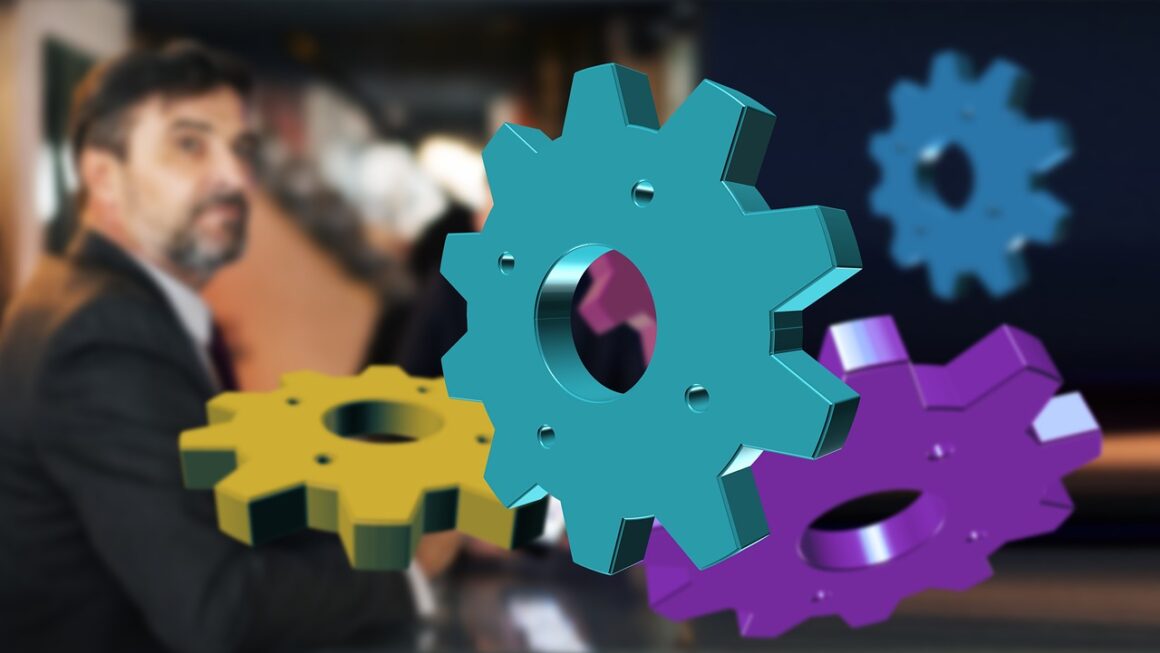Harnessing the power of Artificial Intelligence (AI) is no longer a futuristic concept; it’s a present-day necessity for staying competitive in the world of Pay-Per-Click (PPC) advertising. From automating tedious tasks to unlocking deeper insights and optimizing campaign performance, AI is transforming the way marketers approach PPC. This article explores how AI is revolutionizing PPC, offering practical strategies and insights to help you leverage this powerful technology for enhanced results.
Understanding the Role of AI in PPC
What is AI in PPC?
AI in PPC involves using machine learning algorithms and other AI technologies to automate and improve various aspects of PPC campaign management. It moves beyond basic rule-based automation, learning from data to make intelligent decisions and optimize campaigns in real-time.
Key Benefits of AI in PPC
Implementing AI in your PPC strategy offers several compelling benefits:
- Improved Efficiency: Automate repetitive tasks like keyword bidding, ad copy testing, and budget allocation, freeing up time for strategic initiatives.
- Enhanced Targeting: AI can analyze vast amounts of data to identify high-potential audience segments and personalize ad experiences for maximum impact.
- Optimized Bidding: Smart bidding strategies powered by AI can dynamically adjust bids based on real-time signals, maximizing ROI.
- Better Ad Copy: AI can generate and test multiple ad variations to identify the most compelling and effective messaging.
- Predictive Analytics: AI can forecast campaign performance and identify potential issues before they impact results.
- Reduced Costs: By optimizing bids, targeting, and ad copy, AI can help reduce wasted ad spend and improve overall campaign efficiency.
AI vs. Traditional PPC Automation
Traditional PPC automation relies on predefined rules and scripts to manage campaigns. AI, on the other hand, uses machine learning to learn from data and adapt to changing market conditions. This allows AI-powered systems to make more intelligent decisions and deliver better results than rule-based automation.
AI-Powered Keyword Research and Management
Advanced Keyword Discovery
AI can analyze search queries, website content, and competitor data to identify relevant keywords that you might have missed with traditional keyword research methods.
- Example: AI tools can analyze customer reviews and social media conversations to uncover emerging keywords related to your products or services. They can identify long-tail keywords that have high intent but low competition.
- Actionable Takeaway: Use AI-powered keyword research tools to expand your keyword list and uncover hidden opportunities.
Keyword Grouping and Segmentation
AI can automatically group keywords into relevant themes and segments, making it easier to manage your campaigns and tailor your ad copy to specific audiences.
- Example: If you sell running shoes, AI can group keywords like “best running shoes for beginners,” “trail running shoes,” and “marathon running shoes” into separate ad groups, each with its own tailored ad copy and landing page.
- Actionable Takeaway: Leverage AI to streamline your keyword organization and improve the relevance of your ads.
Dynamic Keyword Bidding
AI-powered bidding algorithms can automatically adjust bids for individual keywords based on real-time signals such as device, location, time of day, and audience demographics. This ensures that you’re always bidding the optimal amount for each keyword.
- Example: If a user searches for your product on a mobile device during peak shopping hours, the AI can automatically increase your bid to ensure your ad is displayed prominently.
- Actionable Takeaway: Implement smart bidding strategies in Google Ads or Microsoft Advertising to optimize your bids for maximum ROI.
Optimizing Ad Copy with AI
AI-Driven Ad Copy Generation
AI can generate multiple variations of ad copy based on your target keywords, audience demographics, and campaign goals. This allows you to test different messaging strategies and identify the most effective ad copy.
- Example: An AI tool can generate several headlines and descriptions for an ad promoting a new software product, focusing on different benefits such as increased productivity, cost savings, or improved customer satisfaction.
- Actionable Takeaway: Use AI to generate a diverse range of ad copy variations and A/B test them to identify the most engaging and persuasive messaging.
Dynamic Ad Personalization
AI can personalize ad copy in real-time based on user data such as location, search history, and past interactions with your website. This ensures that each user sees an ad that is relevant to their individual needs and interests.
- Example: If a user has previously visited your website and viewed a specific product, the AI can display an ad that features that product or a similar item.
- Actionable Takeaway: Implement dynamic keyword insertion and other personalization techniques to create more relevant and engaging ads.
A/B Testing and Performance Analysis
AI can automatically A/B test different ad copy variations and analyze performance data to identify the most effective ads. This allows you to continuously optimize your ad copy for maximum click-through rates and conversion rates.
- Example: An AI tool can automatically rotate different ad copy variations and track their performance, highlighting the ads that are generating the most clicks and conversions.
- Actionable Takeaway: Use AI to automate your A/B testing process and continuously optimize your ad copy based on data-driven insights.
AI-Powered Audience Targeting and Segmentation
Identifying High-Value Audiences
AI can analyze vast amounts of data to identify high-value audience segments that are most likely to convert. This allows you to focus your ad spend on the users who are most likely to become customers.
- Example: AI can analyze website traffic data, customer purchase history, and demographic information to identify audience segments with a high propensity to purchase a specific product or service.
- Actionable Takeaway: Use AI-powered audience analysis tools to identify your most valuable audience segments and tailor your ads accordingly.
Predictive Audience Modeling
AI can build predictive models that forecast which users are most likely to convert based on their online behavior and demographic characteristics. This allows you to target your ads to users who are showing strong signs of interest in your products or services.
- Example: An AI model can analyze user browsing history, search queries, and social media activity to predict which users are most likely to purchase a new car.
- Actionable Takeaway: Implement predictive audience targeting strategies to reach users who are most likely to convert.
Lookalike Audience Expansion
AI can analyze your existing customer data to identify users who share similar characteristics and behaviors. This allows you to expand your reach and target new audiences who are likely to be interested in your products or services.
- Example: An AI tool can analyze your customer data to identify lookalike audiences on social media platforms, allowing you to target users who share similar interests and demographics with your existing customers.
- Actionable Takeaway: Use lookalike audience targeting to expand your reach and acquire new customers.
Improving ROI with AI-Driven Budget Optimization
Automated Budget Allocation
AI can dynamically allocate your budget across different campaigns and ad groups based on their performance. This ensures that you’re investing your money in the areas that are generating the highest ROI.
- Example: If one of your campaigns is performing significantly better than others, the AI can automatically allocate a larger portion of your budget to that campaign.
- Actionable Takeaway: Implement automated budget allocation strategies to optimize your ad spend and maximize your ROI.
Real-Time Performance Monitoring
AI can continuously monitor the performance of your campaigns and identify any potential issues or opportunities. This allows you to take proactive measures to improve your results.
- Example: If the AI detects a sudden drop in conversion rates for a specific campaign, it can alert you to investigate the issue and take corrective action.
- Actionable Takeaway: Use AI-powered monitoring tools to track your campaign performance in real-time and identify areas for improvement.
Predictive Budget Forecasting
AI can forecast future campaign performance and recommend optimal budget levels based on historical data and market trends. This allows you to plan your budget more effectively and avoid overspending or underspending.
- Example: An AI model can analyze historical campaign data and seasonality trends to predict the optimal budget for the upcoming quarter.
- Actionable Takeaway: Leverage AI to forecast your budget needs and make informed decisions about your ad spend.
Conclusion
AI is transforming the landscape of PPC advertising, offering marketers unprecedented opportunities to optimize their campaigns, improve ROI, and achieve their business goals. By embracing AI-powered tools and strategies, you can automate tedious tasks, unlock deeper insights, and personalize ad experiences for maximum impact. From keyword research and ad copy optimization to audience targeting and budget allocation, AI is revolutionizing every aspect of PPC. As AI technology continues to evolve, it will become even more essential for staying competitive and achieving success in the dynamic world of online advertising. So, take the first step today and explore how AI can elevate your PPC campaigns to new heights.




